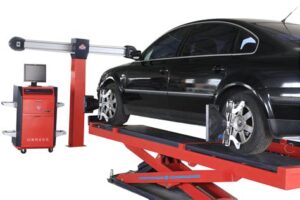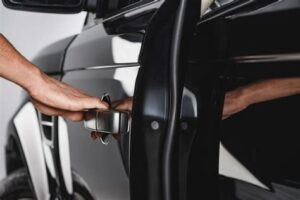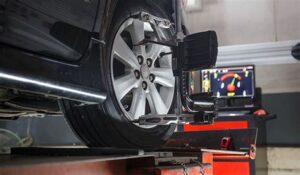How Can I Tell If My Car Needs an Alignment?
Maintaining your vehicle’s performance is essential for safety and efficiency, and one crucial aspect is wheel alignment. Misalignment can lead to uneven tire wear, steering issues, and an overall compromised driving experience. But how can you tell if your car needs an alignment? This article will guide you through the key signs that indicate misalignment, the effects of uneven tire wear, and the impact of steering wheel misalignment. We’ll also provide insights on measuring your car’s alignment and the benefits of timely alignment services. By the end, you’ll be equipped with the knowledge necessary to ensure your vehicle remains in top condition, promoting a smoother ride and extending the life of your tires. Read on to discover how to keep your car aligned and performing optimally!
Signs Indicating Your Car Needs An Alignment
Recognizing when your vehicle requires an alignment is crucial for maintaining optimal performance and safety. Here are some key signs to look out for:
- Uneven Tire Wear: If you notice that your tires are wearing out irregularly, this could be a strong indication that your car’s alignment is off. Uneven wear patterns, such as bald spots on one side, signify that the wheels are not positioned correctly.
- Pulling to One Side: When you drive straight and feel your car pulling to the left or right, it’s a clear sign that the wheels may be misaligned. This not only affects handling but can also lead to accidents if not addressed.
- Steering Wheel Off-Center: If your steering wheel is not centered when driving straight, it’s a potential indicator of alignment issues. A misaligned steering wheel can make driving uncomfortable and increase wear on your tires.
- Vibration in the Steering Wheel: Unexplained vibrations or shaking in the steering wheel while driving can suggest problems with your car’s alignment and may also be related to balancing issues.
- Changes in Driving Characteristics: If your car feels different when steering or if there seems to be a lack of responsiveness in handling, this could also be a sign that your alignment needs adjustment.
By being aware of these signs, you’ll be better equipped to identify when your car needs an alignment. Regular checks and timely interventions can ultimately help you avoid costly repairs and ensure a smoother driving experience.
How Can Uneven Tire Wear Affect Alignment?
Uneven tire wear is often a clear indicator that your vehicle’s alignment is off. When your tires wear unevenly, it can lead to various issues that not only affect the performance of your car but also compromise your safety on the road. Understanding how can uneven tire wear impact alignment is crucial for maintaining your vehicle’s health and ensuring a smooth ride.
| Tire Wear Pattern | Possible Cause | Alignment Impact |
|---|---|---|
| Inner Edge Wear | Excessive Camber | Indicates misalignment |
| Outer Edge Wear | Toe Misalignment | Suggests wheels pointing inward or outward |
| Center Wear | Overinflation | May not indicate alignment issues |
| Patchy Wear | Suspension Issues | Can be caused by misalignment or worn components |
If you notice any irregular tire wear patterns, it’s essential to have your alignment checked by a professional. Proper alignment not only extends the life of your tires but also improves fuel efficiency and overall vehicle handling. Therefore, being proactive about assessing these signs will help you avoid serious problems and costly repairs down the road.
The Role Of Steering Wheel Misalignment
Steering wheel misalignment can be a significant indicator that your vehicle may require an alignment. When your steering wheel is not positioned straight while driving, it can lead to various driving challenges, including difficulty in maintaining a straight path and a feeling of drifting to one side of the road. Understanding how steering wheel misalignment affects your driving experience is essential for ensuring your safety and the longevity of your vehicle.
How can you identify steering wheel misalignment? Start by observing the position of the steering wheel when driving straight. If it appears crooked or tilted, this is a clear sign that alignment may be off. Additionally, if your vehicle pulls to one side or the other despite having a firm grip on the wheel, it could indicate that the wheels are not properly aligned, which directly impacts the steering wheel’s position.
Driving with a misaligned steering wheel can lead to increased tire wear, as uneven tread patterns develop due to the inconsistent angle of the wheels. This not only requires more frequent tire replacements but also heightens the risk of further damage to the suspension system over time.
Regular checks and adjustments of your vehicle’s alignment can help mitigate these issues, ensuring a more comfortable and safe driving experience. By addressing steering wheel misalignment promptly, you also improve overall vehicle handling, enhancing your driving confidence on the road.
How Can You Measure Your Car’s Alignment?
Measuring your car’s alignment is essential to ensure safety and performance on the road. There are several methods you can use to determine whether your vehicle is properly aligned. Here are the most common techniques:
1. Visual Inspection
Start by performing a visual inspection of your tires. Look for signs of uneven wear, such as bald spots or uneven tread depth, which can indicate alignment issues.
2. The Two-Wheel Alignment Method
This method is a straightforward DIY technique that requires some basic tools. Follow these steps:
3. The String Method
This is a more accurate method that also requires basic tools. You will need:
Follow these steps:
4. Professional Alignment Test
If you’re unsure about performing these measurements yourself, consider visiting a professional mechanic. They will use specialized equipment to measure the alignment angles accurately and can provide comprehensive diagnostics.
| Measurement Method | Accuracy | DIY Feasibility |
|---|---|---|
| Visual Inspection | Low | High |
| Two-Wheel Alignment | Medium | Medium |
| String Method | High | Low |
| Professional Test | Very High | None |
Understanding how can you measure your car’s alignment is the first step toward maintaining optimal vehicle performance. Regular checks can save you from costly repairs down the line and enhance your safety on the road.
Benefits Of Timely Wheel Alignment Services
Understanding how can timely wheel alignment services benefit your vehicle is crucial for maintaining its overall performance and safety. Here are some key advantages:
- Enhanced Tire Life: Proper alignment helps distribute weight evenly across all tires, reducing uneven wear and extending their lifespan.
- Improved Fuel Efficiency: Misaligned wheels can cause increased resistance, leading to higher fuel consumption. A correct alignment can help optimize gas mileage.
- Better Handling and Safety: Timely alignment ensures your vehicle steers straight and true, improving control and reducing the risk of accidents.
- Reduced Vehicle Wear and Tear: Keeping your wheels aligned decreases stress on the suspension and steering components, leading to lower repair costs in the long run.
- Comfortable Ride: A properly aligned vehicle offers a smoother ride, minimizing vibrations and discomfort during driving.
Routine wheel alignment is not just about maintaining tire health; it plays a significant role in enhancing the driving experience, ensuring safety, and saving money in repairs and fuel costs. Therefore, understanding how can timely wheel alignment services positively impact your vehicle is vital for any car owner.
Frequently Asked Questions
What are the common signs that indicate a car may need an alignment?
Common signs include uneven tire wear, the vehicle pulling to one side while driving, a crooked steering wheel when going straight, and vibrations in the steering wheel.
How often should I check if my car needs an alignment?
It’s advisable to check your alignment at least once a year, or whenever you notice any of the signs mentioned, or after hitting a large pothole or curb.
Can misalignment affect my vehicle’s fuel efficiency?
Yes, misalignment can cause your vehicle to work harder to travel straight, which can lead to decreased fuel efficiency.
What is the difference between wheel alignment and wheel balancing?
Wheel alignment adjusts the angle of the wheels to bring them back to the manufacturer’s specifications, while wheel balancing ensures that the weight of the tire and wheel is evenly distributed.
Is it safe to drive my car if it needs an alignment?
While it may be safe to drive short distances, it’s not recommended to drive long distances as it can lead to more serious issues and increased tire wear.
How much does a wheel alignment cost?
The cost of a wheel alignment varies depending on the location and vehicle type, but typically ranges from $75 to $100.
Can I do my own alignment at home?
While some basic checks can be done at home, proper wheel alignment requires specialized tools and expertise, so it’s best to have it done by a professional.





